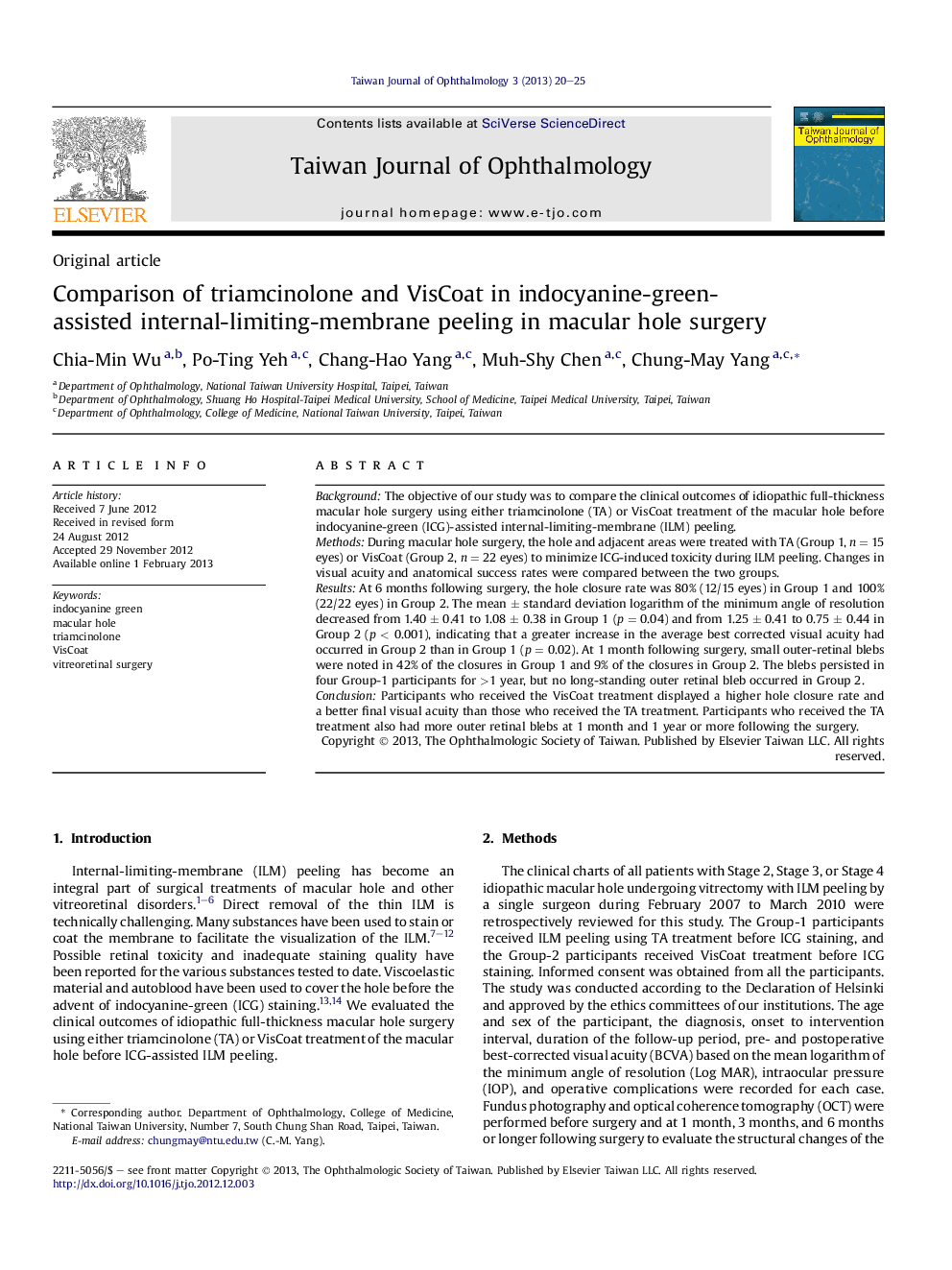| Article ID | Journal | Published Year | Pages | File Type |
|---|---|---|---|---|
| 4033461 | Taiwan Journal of Ophthalmology | 2013 | 6 Pages |
BackgroundThe objective of our study was to compare the clinical outcomes of idiopathic full-thickness macular hole surgery using either triamcinolone (TA) or VisCoat treatment of the macular hole before indocyanine-green (ICG)-assisted internal-limiting-membrane (ILM) peeling.MethodsDuring macular hole surgery, the hole and adjacent areas were treated with TA (Group 1, n = 15 eyes) or VisCoat (Group 2, n = 22 eyes) to minimize ICG-induced toxicity during ILM peeling. Changes in visual acuity and anatomical success rates were compared between the two groups.ResultsAt 6 months following surgery, the hole closure rate was 80% (12/15 eyes) in Group 1 and 100% (22/22 eyes) in Group 2. The mean ± standard deviation logarithm of the minimum angle of resolution decreased from 1.40 ± 0.41 to 1.08 ± 0.38 in Group 1 (p = 0.04) and from 1.25 ± 0.41 to 0.75 ± 0.44 in Group 2 (p < 0.001), indicating that a greater increase in the average best corrected visual acuity had occurred in Group 2 than in Group 1 (p = 0.02). At 1 month following surgery, small outer-retinal blebs were noted in 42% of the closures in Group 1 and 9% of the closures in Group 2. The blebs persisted in four Group-1 participants for >1 year, but no long-standing outer retinal bleb occurred in Group 2.ConclusionParticipants who received the VisCoat treatment displayed a higher hole closure rate and a better final visual acuity than those who received the TA treatment. Participants who received the TA treatment also had more outer retinal blebs at 1 month and 1 year or more following the surgery.
